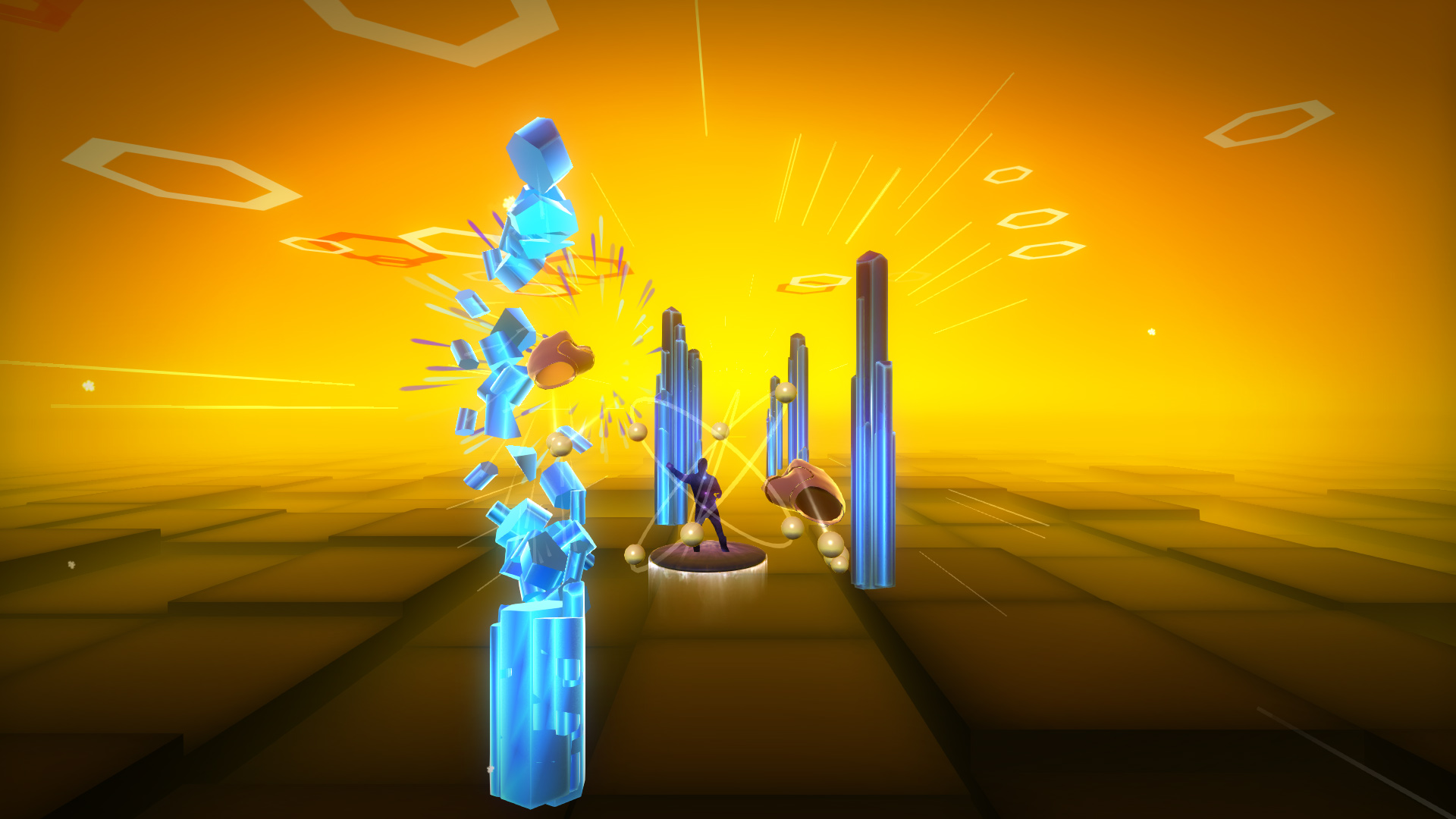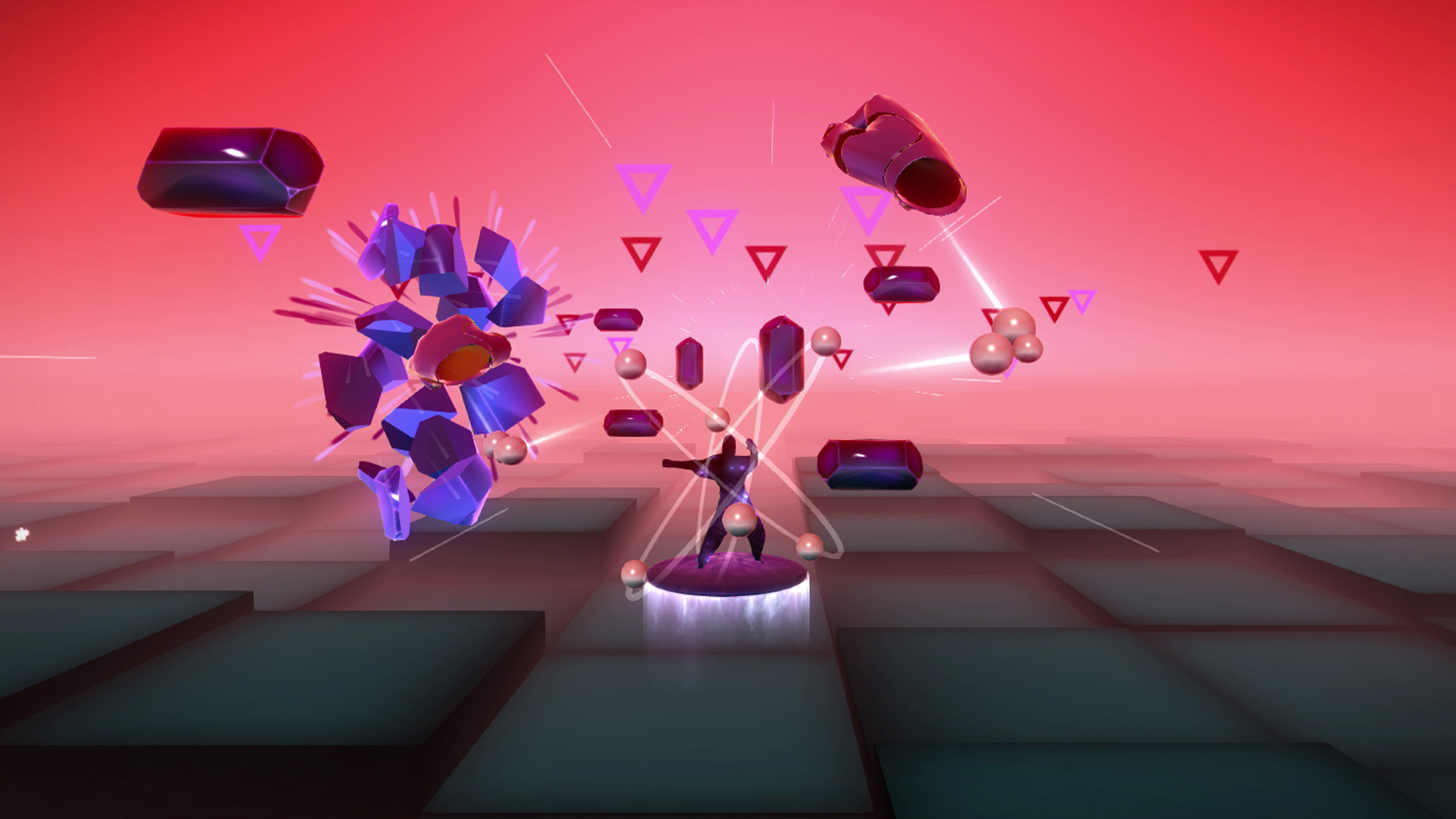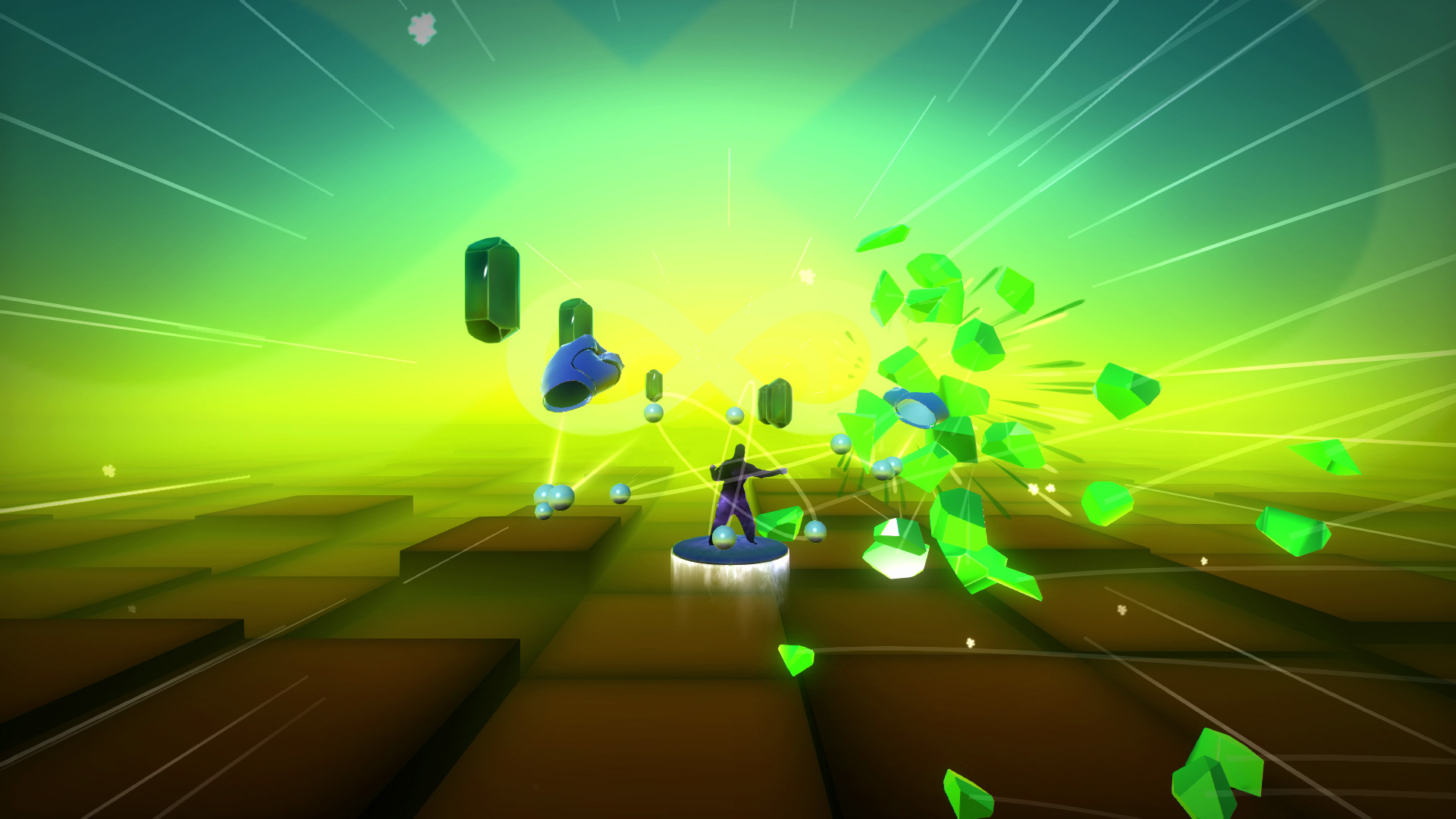Beatsplosion for Kinect Interview
Interview with Aki Kanerva from Virtual Air Guitar Company, Founder and Lead Designer for 'Beatsplosion for Kinect'
A staple I do in all interviews in order to start things off is to ask that you elaborate a bit about your game (s) that people might not know?
Aki: We specialize in motion games. Our primary design guideline is to create games that wouldn’t be possible or sensible with any other control method. So we don’t just use gestures to trigger actions – the buttons on a gamepad are already do that really well. With Kinect, your body can be part of the flow of the game.
I had a great time with Beatsplosion recently and was wondering where the idea for this game came from along with what the main goals were when creating it?
Aki: The very first idea was to create something that would involve fast speed, dodging, and smashing things into pieces. We’d already experimented with breakable objects reacting to the player’s movements in Squid Hero, and we wanted to take that idea further.
At the same time, we also wanted a game with speed and intensity, something a bit closer to Kung-Fu High Impact. We wanted to provide a workout without feeling like a boring gym exercise. That’s where the punching and dodging come from.
But it really clicked together once we added music and rhythm into the mix. We humans like doing things in time to a beat. Exercise can be boring, but not if you’re doing it to music and also get to smash things to your heart’s content.
We didn’t set out to create a fitness game with gym-like exercises. We wanted to do something that’s first and foremost a lot of fun, and if you get your sweat on while playing, all the better.

The visuals and audio mixed together well for an experience I quite enjoyed. What was the process behind lining up the movements with the beat of the music?
Aki: The gameplay and music evolved together. Working with music and sound designer Thomas J Holmes was great, because we were able to define the overall structure of the music so that the gameplay would slot in perfectly. For example, we wanted a steady beat throughout, each level would last 3 minutes, each segment would be eight measures long, and we needed tracks in many different tempos. This wouldn’t have been possible if the music hadn’t been composed specifically for Beatsplosion.
Once this framework was in place, creating the levels was relatively easy, kind of like working with a sequencer or drum machine. Of course, everything had to be constantly tested, so we did get a lot of exercise during development!
There was also some physics based destruction in the environment , what was the process of making the various structures you hit break apart?
Aki: Physics and Kinect seem to go together really well. It was important to us right from the start that objects should react to the player instantly, realistically and in a most satisfying manner. Being able to direct the fragments by punching in a specific direction was fun even by itself. We considered adding game mechanics to it, but in the end freedom of choice felt the most satisfying option. We also experimented with different materials like asteroids and brick walls, but there’s something unique about breaking glass crystals into a thousand pieces.
The code for dividing an object into fragments is based on middleware, but that’s only the beginning. The physical reactions were hand-crafted by us, specifically for Beatsplosion.

The Kinect hasn’t quite received a push as of recent which is definitely disappointing as it’s a technology I quite enjoy. What are your thoughts about getting people excited again about movement controlled games and what the Kinect can provide for people?
Aki: Physical activity is the main attraction. Getting up and moving around is a lot of fun, and with Kinect you can do that at home. You’re playing cool games and getting exercise almost by accident.
It’s also great to see parents and kids playing together. In our experience, kids learn Kinect games extremely quickly, and they give it everything they’ve got. The gameplay is so immediate and direct – there’s no controller in between you and the game. Someone who’s never touched a controller can feel instantly at home playing a good Kinect game.
This is a great time to pick up a Kinect. The Standalone Kinect’s price has dropped from $149 to $99 and the selection of Kinect games is bigger – and we’re doing everything we can to grow it even more.
I’d love to see more indie developers take up Kinect, because what we need right now is a big variety of ideas, not just one dance game after another. The bigger the variety, the more people will find something they enjoy in the selection.
Looking past the release for Beatsplosion, what sort of games and experiences is the team looking at working on in the future?
Aki: We have lots of concepts in store, but we haven’t yet decided on the order. I want to see if we can bring Kung-Fu High Impact to Xbox One, because there are many new players out there who’ve never had the opportunity to play the Xbox 360 title. Another concept I’m pretty excited about is a Kinect stealth game. A sequel to Boom Ball could be fun. We’ve also got Kinect prototypes for a 2D platformer with movement in all directions, as well as a side-scrolling shooter. And we’re looking into more experiences that kids and parents can enjoy together, like Boom Ball and Squid Hero. But the real kicker is our prototype of an avatar-based third-person combat game – basically, Kung-Fu in 3D. It’s a big enough project that external financing is needed to make it happen, though.

Now to take a look back at your past titles on Xbox One; Boom Ball, Squid Hero and Beatsplosion how was the experience working on these games and Xbox One/Kinect?
Aki: Today’s tools for creating games are really great. Xbox One is a straightforward platform to work on, compared to Xbox 360 or PS3. You’ve got good tools like Unity and the community around it to make development quicker than ever, not to mention the ease of self-publishing via the ID@Xbox programme. I like the new Kinect for Xbox One too: the hardware has improved, and you need less space for playing than on Xbox 360.
Lastly I would like to leave a spot for you to say something or go over anything I might have missed during the interview?
Aki: Microsoft’s Major Nelson has blogged that almost half of Xbox One owners have a Kinect, and Mike Nichols from Xbox has said that the vast majority of Kinect owners use it regularly – just not so much for games. I want to believe the reason for this is that the right game hasn’t come up in front of them yet. So what we need is diversity, and more talk about Kinect games in the media! Kinect is no longer “that weird peripheral”, it’s a natural part of gaming.
Virtual Air Guitar Company Site
Beatsplosion for Kinect Store Page
Squid Hero for Kinect Interview

 Xbox
Xbox Playstation
Playstation Nintendo
Nintendo PC
PC Mobile
Mobile Stadia
Stadia












